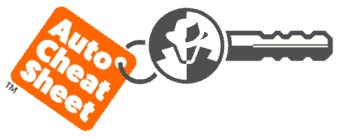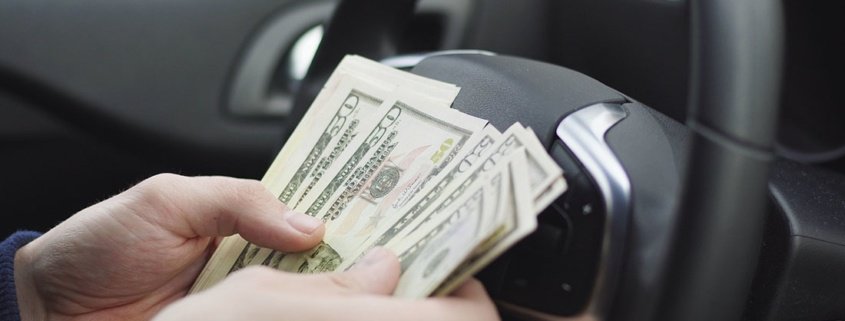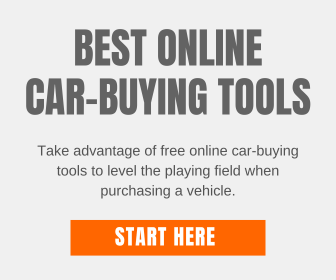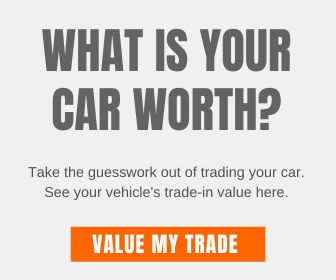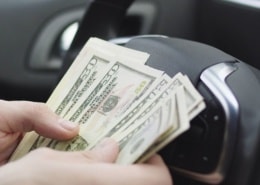What is Your Car Worth in 2024?
See What Your Vehicle’s Trade-in Value is.
Before visiting a car dealership, find out your vehicle’s trade-in value. Edmunds’ free appraisal tool can give you an accurate estimate for your car in as little as a minute.
They do not require personal information; third parties will not solicit you.
What’s Your Car Worth in 2024
Powered by Edmunds
You’ve decided to trade your car in. Although you realize selling your car yourself will net you the best deal. You don’t have the time, energy, or patience. The one-stop shopping convenience of buying a new car and trading in the old one at the dealership appeals to you.
The trouble with trading your car in at a dealership is they have experience on their side. Extracting the best deal takes research, savvy, and a bold approach.
Click on the picture to find your vehicle’s worth before entering a dealership.
Once you know your trade-in value, check out my step-by-step guide on trading in a car to guarantee you get the most money for your trade.
How the Edmunds Appraisal Tool Works
Edmund’s appraisal tool is simple and easy to use:
- Enter license plate or VIN – This helps them identify your car. You don’t have to enter any private or personal information.
- Answer a few quick questions – What trim level? What condition? How many miles?
- See what your vehicle’s worth – Get an accurate appraisal of what your car is worth in your area.
Details About the Edmunds Appraisal Tool
Vehicles produced after 1990 may be valued: Almost every make, including foreign, domestic, and luxury brands like Infiniti and BMW, are covered. If you possess a historic automobile, this approach will not work because the technology only appraises vehicles manufactured after 1990. In such a scenario, you’d need to consult a professional classic vehicle guide to figure out what it’s worth.
How your appraisal is calculated: They use data from several sources, including dealer transactions, automobile depreciation costs, and customer information, to compute valuations. The assessed value is determined by the year, make, model, trim, mileage, depreciation, and vehicle characteristics.
The information on your appraisal: If you’re selling or trading in your car, we’ll help you make the best decision possible. You’ll be given up to four car prices to choose from trade-in, private party, dealer retail, and certified used. If you trade in your current vehicle for a new one, the trade-in price is what you may expect from auto dealerships. It’s always the lowest price and the one closest to the actual cash worth of your automobile.
The private-party amount is what a seller may expect if they are conducting a private transaction. This is always more than the trade-in value of the vehicle. However, this method requires more effort because you’ll be interacting with buyers directly.
The dealer retail value on the appraisal is for consumers buying a used car. It accurately estimates what a buyer may anticipate paying at a dealership when purchasing a used vehicle. Suppose you are valuing a late-model used car. In that case, you’ll also notice a suggested “certified used” figure, which is the estimated sale price for consumers looking for a certified pre-owned vehicle.
Honesty is the Best Policy
You will be asked to describe your car via the tool. Let’s consider why investing in the proper choices is worthwhile.
Options and trim levels are essential when it comes to value
The engine type, transmission, and drive system of an automobile can significantly influence its overall value. A sunroom, GPS, leather seats, and automated temperature control are all available options. It’s terrific if you can recall your car’s choices off the top of your head. If not, here are some resources to help locate the information you want.
The most accessible location to look for added options is on the vehicle’s original window sticker (which includes the mpg, packages, and total MSRP). Unfortunately, only a tiny percentage of people keep the sticker. If you don’t have it, your best chance is to sit in your car and compile a list of your vehicle’s available alternatives.
You may complete the options check section while sitting in the driver’s seat if you’re using a smartphone, tablet, or laptop. It’s critical to choose the correct options and trim level. You are looking to find out the actual value of your car. The last thing you want is any surprises by undervaluing or overvaluing your automobile.
One important trade-in tip is to ensure your vehicle is presentable by cleaning it up as much as possible before taking it to the dealership. You can do many simple and inexpensive things to increase the value of your trade-in before taking it to the dealership to guarantee you get the most money for your car.
You will also need to understand that someone will physically inspect your trade-in when you get to the dealership. Dealers are not too keen on doing “sight-unseen” appraisals. This is not common practice and not how a dealership’s appraisal process works.
Trade-in Value FAQs
How is the trade-in tool value calculated?
There are many factors taken into consideration when calculating a used car’s value:
- The factory invoice price of the automobile.
- Manufacturer’s suggested retail price. (MSRP)
- The supply and demand for that particular model.
- Data from real-world transactions around the United States.
- Popularity and reputation of a car brand.
- Manufacturer incentives to dealers (which might decrease the car’s True Market Value).
- Advertising costs for dealers and manufacturers (1-3 percent of the TMV).
Is it possible to trade in my car if It’s not paid off?
The short answer is, “Yes.” However, you will want to be sure the trade-in value is sufficient to pay off the auto loan. Otherwise, the dealer will carry the debt to your next auto loan, and you will owe more than the vehicle is worth. In the car business, this is called being “upside-down” or “under-water” in your car.
What is considered average car condition?
The automobile has typical wear and tear and requires minimal reconditioning before it can be resold. It may have minor dents, dings, or scratches and may require some maintenance, but it does not need substantial mechanical or aesthetic repairs. There are no concerns with the title, history, or odometer.
When is a vehicle considered in poor condition?
“Poor condition” refers to a car with significant technical or aesthetic flaws and in poor running condition. “Poor” refers to vehicles with a branded title (salvage, flood, etc.) or unsupported mileage. A vehicle may require an independent evaluation to establish the car’s worth in bad condition.
What buying and selling terms should you know?
- MSRP (Manufacturers Suggested Retail Price) – Manufacturers recommend prices to dealers for the sale of their vehicles, as the name suggests. Only new cars are eligible. Dealers have their calculations that inflate the price even further.
- Factory invoice price – This is the price paid by the dealer to the manufacturer. It is also mistakenly known as the dealer’s cost. Actual new car dealer cost can be much lower than dealer invoice price. Again, generally reserved for new automobiles.
- Purchase price – This is the total cost of the sale, including all fees. Taxes are computed individually and are not included in the purchase price. This pricing is valid for both new and secondhand automobiles.
- Wholesale Price – This is the amount a dealer spends when purchasing used vehicles. You will unlikely be able to buy an automobile at its wholesale price. Only desperate dealers sell without making any profit.
- Trade-in Value – Also known as “Actual Cash Value.” This is the price you receive as an offer from a dealer when you trade your old automobile for a new one. The value of your trade-in will always be less than the amount of money you can earn selling to a private buyer.
- See all the new car price terms you need to know before buying a car.
